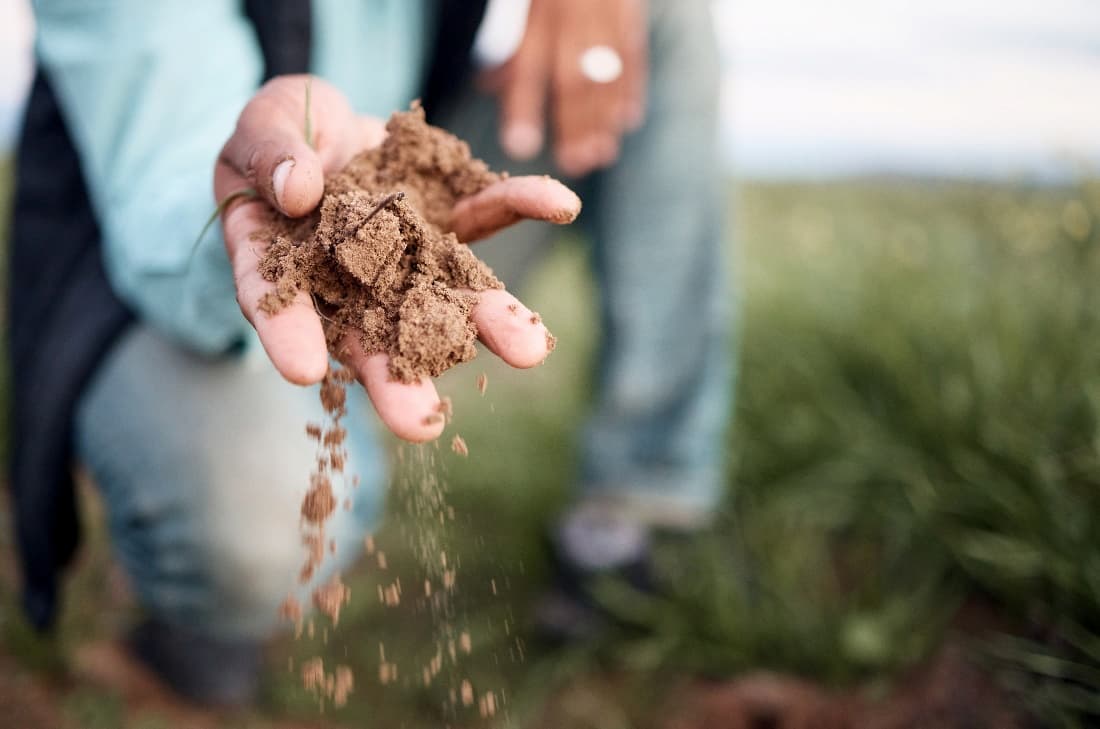Soil health and regenerative agriculture are the keys for increasing production agriculture today. Loosely speaking, a healthy soil is a regenerative soil where the microbial community sustains the soil and provides for the needs of crop production as well as the health of the planet. A healthy soil assures that soil resources will be there for the next generations. Unfortunately, many of today’s farming practices don’t guarantee a healthy soil. Although producers excel at growing their crops, they can be slow to learn how to effectively farm their soil. Some will recall the American Dust Bowl of the 1930s when plowing and extensive tillage along with dry weather and wind led to extensive soil degradation and loss.
But how do you define a healthy soil? It depends on who you talk to and what their objectives are. Growers might characterize healthy soils as having good soil tilth, drainage, high organic matter levels, large population of microorganisms, and sufficient (but not excessive) levels of essential nutrients. One of the main advocates promoting soil health is the USDA, who through the NRCS, are charged with protecting our soil resources from one generation to the next and improving degraded soils.
According to the USDA, “Soil health is defined as the continued capacity of soil to function as a vital living ecosystem that sustains plants, animals, and humans. Healthy soil gives us clean air and water, bountiful crops and forests, diverse wildlife, and beautiful landscapes.” The international Food and Agriculture Organization’s (FAO) definition is more succinct: “Soil health is the ability of the soil to sustain the productivity, diversity and environmental services of terrestrial ecosystems.” Both definitions refer to sustaining the microbial community below ground, which is the most important ingredient of soil health and often overlooked.

Sustaining and harnessing the soil’s microbial community’s functionality means their environment must be near ideal. In other words, the soil is the house where microbes reside, and if that house is damaged, the microbial community won’t flourish or achieve what you expect of them. When you begin building your soil health resources, first consider the quality of your soil to see what limitations may exist. Chemical and physical factors affect microbial activity. Chemical factors include soil pH, electroconductivity (E.C.) and sodium levels, organic matter, soluble carbon, and soluble nitrogen levels. Physical factors include soil bulk density, presence of compaction layers, drainage, and porosity. Growers have some control over these chemical and physical factors but usually limited control over soil moisture and no control over temperature, which microbes need to flourish.
Many institutions and companies have been actively promoting soil health for nearly a decade, but they have been largely focusing on promoting the five practices recommended by the NRCS:
- Broaden plant diversity to increase microbial diversity in the soil.
- Manage soils more by disturbing them less, which means reducing or eliminating tillage practices.
- Keep plants growing throughout the year to feed the soil’s microbiome, which means including cover crops in your crop rotation.
- Keep the soil covered as much as possible with crop residue and by reducing tillage.
- Integrate livestock to recycle nutrients and increase plant and microbial diversity.
These practices are important foundation steps growers should take for improving both soil health. Thus, improving water infiltration and retention, building good soil structure, increasing soil organic matter, and enhancing nutrient mineralization and availability. Improving these factors helps reduce the need for inputs, increases sustainability, and increases a plant’s resilience to drought, pests and intense rains events.
However, these practices don’t tell the whole story. These exclude the value of using biological products that can enhance the soil microbiome while providing solutions to soil limitations or crop production needs. Understanding the microbial community’s myriad of functionalities and how to measure them are important next steps. Harnessing the microbial community to further build the soil and provide for crop needs is essential for enhancing soil health.
Soil is the Source™ is an AgriThority® initiative supporting development of new technologies from all around the world to help farmers improve soil productivity for greater yields and profit. Learn more about the role of AgriThority® in the development of soil health technologies and watch for more content on the real strength of biologicals.


